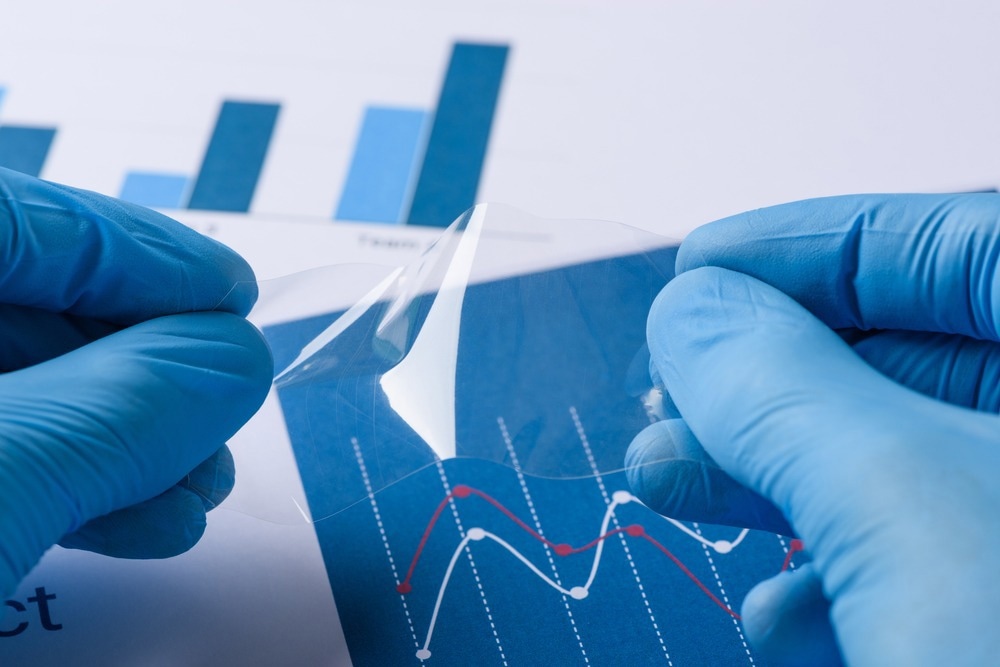A recent study published in Nanomaterials theoretically examines a germanium thin film under femtosecond laser irradiation. The researchers used a two-temperature model combined with the Drude model and the carrier density rate equation to determine the lattice temperatures and material-specific optical characteristics, including dielectric function and reflectivity.

Study: Optical and Thermal Behavior of Germanium Thin Films under Femtosecond Laser Irradiation. Image Credit: nevodka/Shutterstock.com
Femtosecond laser irradiation induces a change in both the optical and thermal characteristics of germanium thin film. The researchers proposed that the impact ionization process is primarily responsible for the thermal change of the germanium thin film surface caused by femtosecond laser irradiation.
Challenges Associated with Femtosecond Laser Pulses
There has been a significant advancement in the manufacturing of ultrafast laser materials. Femtosecond pulsed lasers are used in applied physics or industrial applications. However, some challenges associated with several femtosecond laser-related processes are still present.
The kind of material target significantly impacts the underlying physics of interactions between ultrashort single-pulse lasers and material. Phase explosion is the most common mechanism in metals and semiconductors, whereas the Coulomb Explosion (CE) predominates in dielectrics. Multi-pulse femtosecond laser interactions rapidly surpass the ablation threshold and aggregate on the exposed surface.
Response of Germanium Under a Single Femtosecond Laser Pulse Irradiation
Germanium has attracted much attention recently due to its potential use in the mid-infrared imaging approach. In this research, Abdelmalek et al. analyzed how germanium thin film reacts with a single femtosecond laser pulse. They identified the physical mechanisms underlying the thermal changes that radiation causes in germanium.
A femtosecond laser can precisely polish Germanium optical substrates. Electrons inside the valence band (VB) absorb energy when semiconductors are exposed to ultra-short laser pulses. These electrons excite to the conduction band (CB) via multi-photon absorption or single-photon absorption, depending on the bandgap energy. The excited electron-hole pairs pass the extra energy to another electron-hole pair by recombining through the non-radiative Auger recombination process. The recombination process rises the kinetic energy of the newly formed electron-hole pair.
The free electrons direct their energy to the lattice before thermal equilibrium is attained. This rises the lattice temperature and causes phase explosion and surface alterations such as melting or bubble formation when the material reaches the superheated state or approaches the critical temperature.
The thermal process of a germanium thin film by a single laser pulse has been investigated through an atomic-level hybrid approach coupled with molecular dynamics. However, this model fails to capture the temporal dynamics of the material throughout the irradiation because of the equilibrium state of electron-hole plasma.
Two-Temperature Model for Femtosecond Laser Interaction
There is consensus that the two-temperature model explains femtosecond laser interaction in metals, in which free electrons absorb deposited energy and transfer it to the lattice through electron-phonon collision.
The Fermi-Dirac distribution requires electron relaxation to be achieved before energy transfer. Therefore, the electron temperature loses significance, and the model is insufficient if the laser width is significantly less than the electron-electron scattering duration.
The interaction of femtosecond lasers with Germanium (semiconductor) can be examined by modifying the two-temperature model for semiconductors. The two-temperature model is helpful for forecasting ablation depth, estimating melting threshold, and tracking changes in electron and lattice temperature. However, it provides no useful information for predicting dynamic changes in the solid state.
Coupling the Two-temperature Model with the Electron Density Rate Equation
Abdelmalek et al. combined the two-temperature model with the Drude model and the electron density rate equation to solve the limitations of traditional models monitoring the thermal and optical response of germanium thin film under femtosecond laser excitation. They demonstrated that this approach could predict several thermal and optical properties of germanium thin film at the femtosecond.
Research Findings
In this research, the extended two-temperature model coupled with the electron density rate equation and the Drude model was used to theoretically investigate the thermo-optical response of Germanium thin film under femtosecond laser irradiation.
The researchers revealed that the suggested model effectively tracked the evolution of the thermal and optical properties at the femtosecond by comparing their calculations with experimental results reported in the literature. The results demonstrated that the photo-ionization process significantly increased plasma electron density under irradiation. Germanium developed metallic properties when laser fluence exceeded a certain threshold (0.028 J cm-2). The impact ionization process amplified the thermal effect when laser fluence reached the melting threshold (0.14 J cm-2).
The impact ionization process started the thermal change of the Germanium thin film surface with a single femtosecond laser pulse. This significantly contributes to our knowledge of the underlying physics governing ultrafast laser-matter interaction. Further theoretical and applied research is required to support these findings and to provide answers to a wide range of other queries in the rapidly developing field of femtosecond laser-matter interaction at the nanoscale.
Reference
Abdelmalek, A., Kotsedi, L., Bedrane, Z., Amara, E.-H., Girolami, M., & Maaza, M. (2022) Optical and Thermal Behavior of Germanium Thin Films under Femtosecond Laser Irradiation. Nanomaterials, 12(21), Article 21. https://www.mdpi.com/2079-4991/12/21/3786
Disclaimer: The views expressed here are those of the author expressed in their private capacity and do not necessarily represent the views of AZoM.com Limited T/A AZoNetwork the owner and operator of this website. This disclaimer forms part of the Terms and conditions of use of this website.